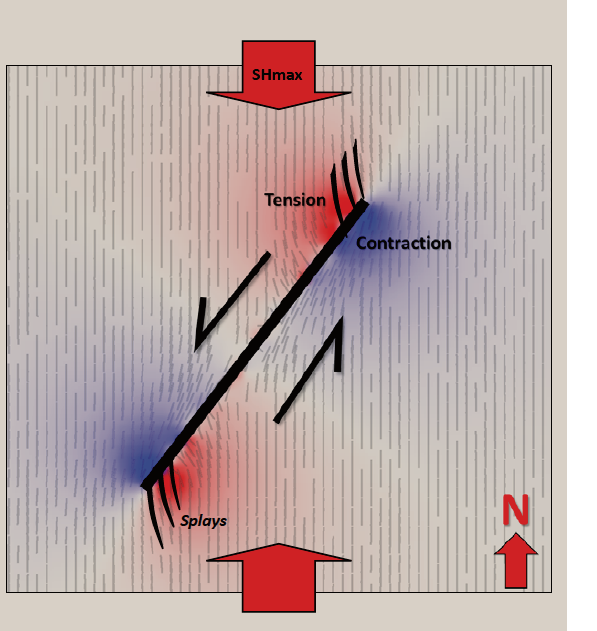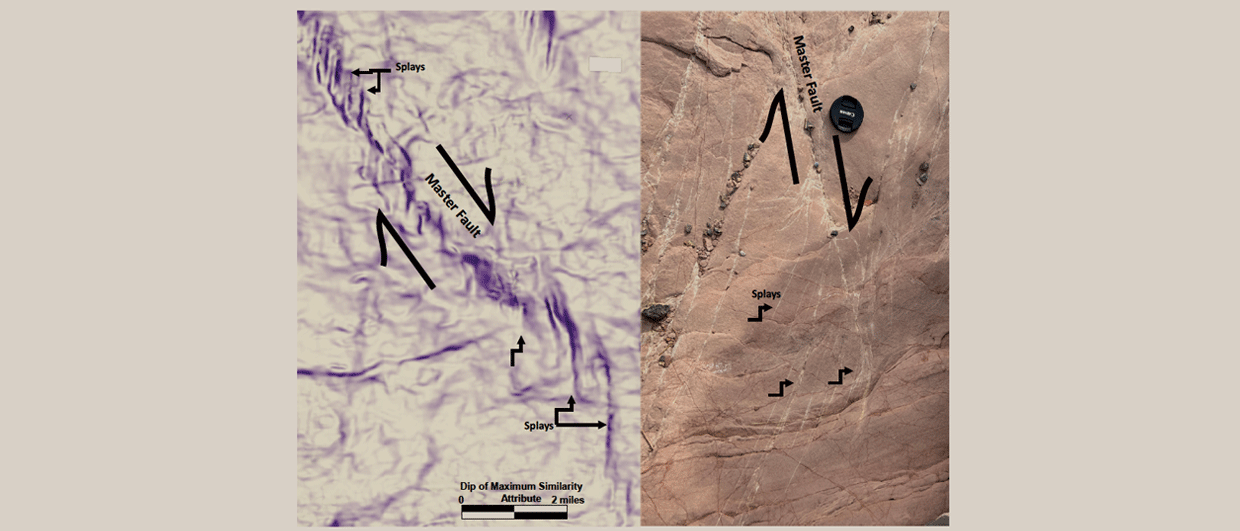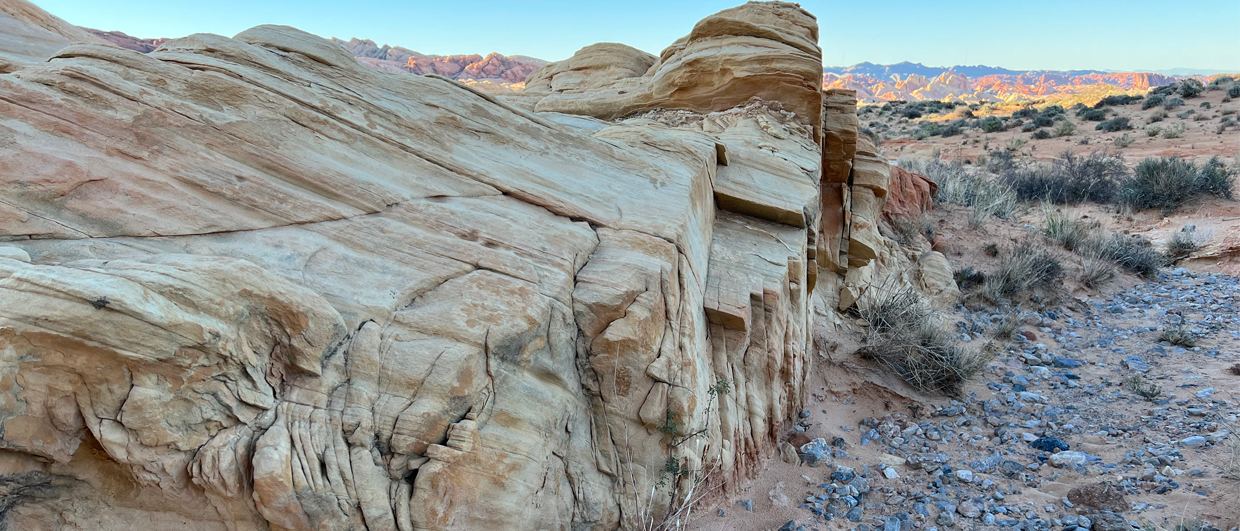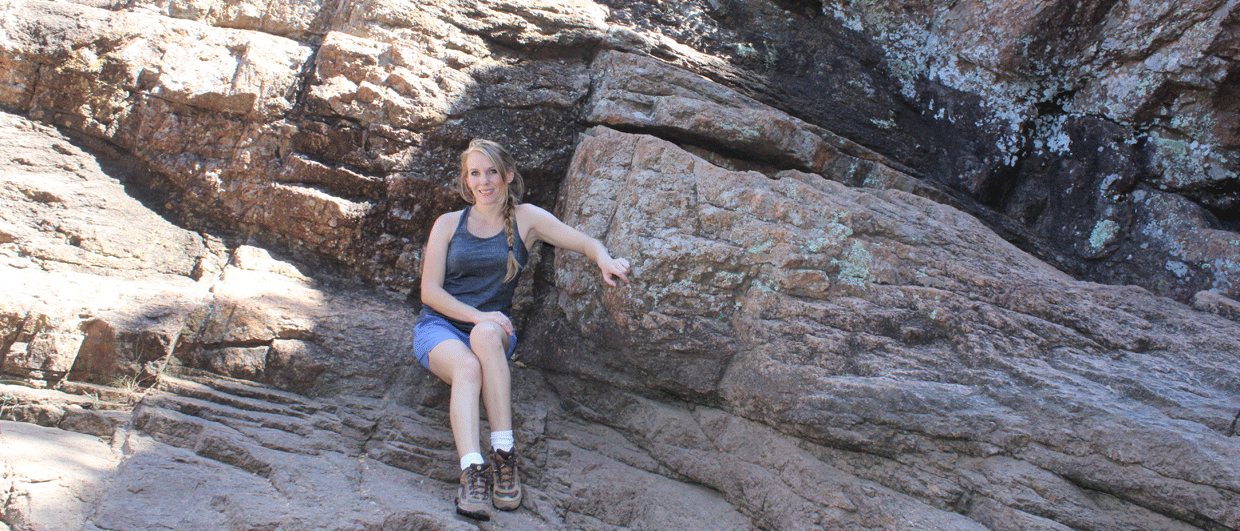These funny faults go by several names, but traditionally refer to the secondary faults and fractures that develop near the tips of a primary fault. Although these can occur on both normal and reverse faults, the terminology is commonly used when referring to strike-slip faulting. Horsetail splays often look like the hairs from a horse’s tail near the tip of a fault. However, they are often limited to just one side of the fault representing a tensional quadrant. The opposite side of the fault would represent a contractional quadrant (figure below).

Horsetail splays occur as displacement dissipates near the end of a fault and slip is distributed through several smaller branching faults that curve away from the main fault – sub-parallel to the maximum horizontal stress, SHmax – in an imbricate pattern. They are great kinematic indicators for slip direction, and in the case of strike-slip faults, for determining left-lateral verse right-lateral slip. Horsetail splays occur as the rock is pulled away from the fault tip, forming an acute angle with the master fault “pointing” in the slip direction. The opposite side of the fault would be under more contraction/compression as the rock pushes towards the fault tip. Often, we can find dissolution (stylolites) or grain crushing (compaction bands) features in this quadrant.
The image below shows horsetail splays at two different scales, one in an outcrop occurring in Jurassic aeolian sandstone, and one in 3D seismic enhanced by structural attributes. Larger horsetail splays can be resolvable in 3D seismic volumes due to the extensional component of slip that accommodates the strike-slip faulting in the tensional quadrant. These are helpful for determining slip sense along strike-slip faults in the subsurface where piercing points may be difficult to come by.
Flow conduits
Identifying and understanding the tensional regions around faults can be important for energy ventures. Horsetail splays often represent tensional deformation where the faults and fractures can act as conduits for fluid flow, making them critical for both mineral exploration and geothermal development. Additionally, horsetails splays may even host prospective sedimentary basins along the tips of major strike-slip faults, making them important for petroleum exploration.





